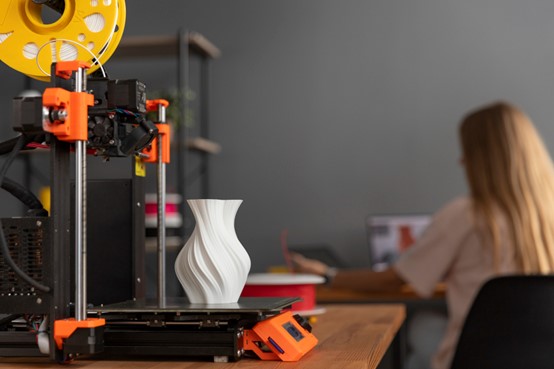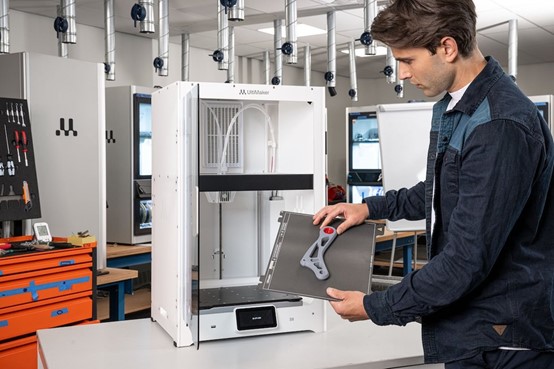


 CN/EN
CN/EN



 CN/EN
CN/EN
The global momentum of additive manufacturing is impossible to ignore. In 2024, the worldwide 3D printing market reached $15.35 billion, projected to more than double to $35.79 billion by 2030. But within this fast-growing industry, it’s the desktop 3D printing segment that stands out, with an impressive 23.8% CAGR expected between 2025 and 2030 — outpacing the broader 3D printing market.[1]
This explosive growth aligns perfectly with Southeast Asia’s emergence as a dynamic hub for digital manufacturing, prototyping, and innovation. As small businesses, makerspaces, and educational institutions across Thailand, Vietnam, Malaysia, and Indonesia embrace rapid prototyping and localized production, the demand for affordable, high-performance desktop 3D printers is rising sharply.

At the heart of this surge lies Shenzhen — the undisputed capital of global hardware innovation and the powerhouse of desktop 3D printer manufacturing. Over 70% of the world’s desktop 3D printers are produced in China, with Shenzhen-based companies like Creality, Anycubic, and Flashforge leading the charge.[2]
But Shenzhen’s dominance goes far beyond cost advantages. The city’s tightly integrated supply chain ecosystem — anchored by the legendary Huaqiangbei electronics market — enables manufacturers to move from concept to production with unprecedented speed. Product iteration cycles that might take months elsewhere can be compressed into mere days. This “Shenzhen speed” is powered by vertical integration, rapid prototyping facilities, and a culture of open-source hardware innovation.
The result? A consistent stream of competitively priced, feature-rich desktop 3D printers ideally suited to the needs of Southeast Asian creators and entrepreneurs.
Southeast Asia’s growing appetite for desktop 3D printing is driven by a broad range of practical and commercial applications:
Startups and SMEs across the region are leveraging desktop printers to rapidly develop, test, and iterate on product designs — without the high overheads of traditional prototyping.
With capabilities like resin-based printing and precision modeling, desktop printers are transforming jewelry design, especially for custom molds used in lost-wax casting — a common process in Vietnam and Thailand.
From anime figurines to tabletop game pieces, affordable 3D printers allow independent makers and hobbyists to produce small-batch, highly customized products with high detail resolution.
Desktop 3D printers are increasingly used for jigs, fixtures, and classroom projects. Leading universities in Thailand, Malaysia, and Vietnam are investing in makerspaces equipped with FDM and SLA printers, training the next generation of designers and engineers.
This versatility makes desktop 3D printers indispensable tools for innovation — whether in classrooms, maker labs, or small-batch production lines.

China’s export data clearly reflects this momentum. In October 2024 alone, Chinese manufacturers exported 1,149 batches of 3D printers — a 46% year-on-year increase — with Southeast Asia among the top destinations.[3]
Beyond raw shipment volume, the growth is fueled by two key business models:
Many Chinese firms act as OEMs or ODMs, supplying branded or white-label printers to international clients. This allows Southeast Asian distributors to sell high-quality, Chinese-manufactured machines under local or global brands.
E-commerce platforms and electronics retailers in Vietnam, Indonesia, and Malaysia now stock a wide range of Chinese desktop 3D printers. Brands like Elegoo and Anycubic are readily available via platforms like Ubuy, ensuring convenient access and after-sales support for regional users.
These multi-channel strategies allow Chinese manufacturers to penetrate Southeast Asia deeply — even when their names aren’t always visible on the front of the printer.
Taking place from September 10–12, 2025, the upcoming TCT Shenzhen 2025 trade show offers a pivotal moment for Southeast Asian buyers, resellers, and OEM partners to connect directly with leading Chinese desktop 3D printer brands.
With a dedicated focus on desktop and prosumer-level solutions, TCT Shenzhen is not just another 3D printing trade show — it's the central sourcing hub for volume procurement, product evaluation, and ecosystem building.
Highlights include:
For Southeast Asian visitors, TCT Shenzhen represents the best place to preview innovations, test machines, and forge new distribution agreements with the brands driving the industry forward.

Building on that momentum, TCT Asia 2026 will be held in Shanghai from March 17–19, 2026, offering a longer-term strategic vision. It focuses on industrial-scale additive manufacturing, metal printing, and integrated digital workflows — technologies that Southeast Asian companies may “graduate” to after starting with desktop solutions.
This two-tiered show strategy mirrors the natural growth curve of the region’s additive manufacturing sector: start small and scale fast.
From polymer printers for educational use to metal AM systems for aerospace and automotive parts, Shanghai’s TCT Asia event offers:
As Southeast Asia embraces Industry 4.0, the alignment between regional demand and Chinese supply couldn’t be stronger. Affordable, fast, and capable desktop 3D printers — many born from Shenzhen’s unique innovation engine — are transforming how Southeast Asia designs, builds, and educates.
The future of manufacturing is local, fast, and digital — and for Southeast Asia, desktop 3D printing is the gateway. Now is the time to:
To stay updated on the latest from the TCT events, follow TCT Group on LinkedIn.
[1] Desktop 3D Printing Market Size | Industry Report, 2030, accessed July 17, 2025
https://www.grandviewresearch.com/industry-analysis/desktop-3d-printing-market-report
[2] China accounts for 70% of the global desktop 3D printer market ..., accessed July 17, 2025
https://www.voxelmatters.com/china-accounts-for-70-of-the-global-desktop-3d-printer-market/
[3] 3d Printer Exports from China - Volza.com, accessed July 17, 2025
https://www.volza.com/p/3d-printer/export/export-from-china/